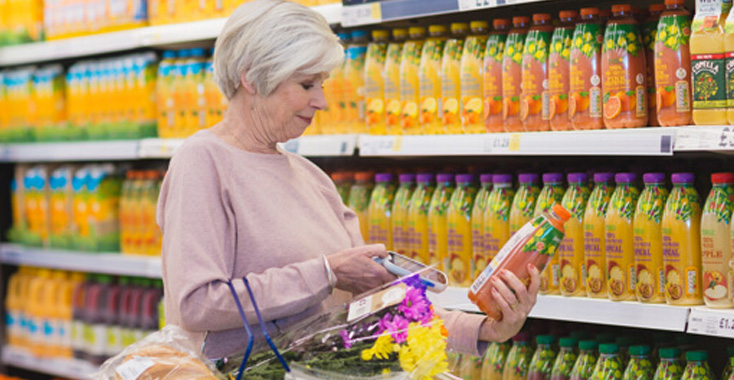Tesco has reportedly announced plans to roll out location-specific ads in-store on its 'Scan as you Shop' handsets.
While the supermarket first included advertisements on the devices in 2023, it is now planning to launch location-specific ads linked to a particular aisle or shelf, according to a report by The Grocer.
The supermarket's mobile barcode readers, first introduced in 2012, are collected at the front of the store and scanned with a Tesco Clubcard.
They allow customers to scan the items they add to their baskets before paying for them at a self-service checkout.
The process means that customers don’t need to unload their shop onto a conveyor belt or checkout station.
These devices, which are used by millions of Tesco Clubcard members, are currently available at 580 stores across the UK.
As reported by The Grocer, talking at an supplier event about the new targeted ads, Lee Roberts, head of sales at the supermarket's media arm Tesco Media & Insight Platform, said: “This means you’re going to be able to target customers in proximity to an aisle, to a shelf, as they navigate their way around the store."
He continued: “I’m about to go into the frozen aisle and on my Scan as you Shop device I’m delivered a display message for a particular product, offer, or promotion that’s in that frozen aisle. And this can be replayed as you navigate your way around the rest of the store."
Roberts described the move as a "huge step forward" in terms of Tesco's location-targeting capabilities and a "massive step forward" for its connected store offering.
The report said that Tesco is also introducing Google Shopping to its third-party ad partners.
Google Shopping allows users to browse products from advertisers and sellers who have chosen to feature their products on the platform.
Latest News
-
The top technology trends to expect in 2026
-
The most read National Technology News stories of 2025
-
Lyft and Uber sign deals with Baidu for robotaxi trial in London
-
Nextdoor launches AI-driven self-serve ads platform for small businesses
-
Italy's antitrust fines Apple €98.6m over alleged App Store dominance
-
Visa partners with UAE real estate firm to launch voice-enabled agentic commerce payments
The future-ready CFO: Driving strategic growth and innovation
This National Technology News webinar sponsored by Sage will explore how CFOs can leverage their unique blend of financial acumen, technological savvy, and strategic mindset to foster cross-functional collaboration and shape overall company direction. Attendees will gain insights into breaking down operational silos, aligning goals across departments like IT, operations, HR, and marketing, and utilising technology to enable real-time data sharing and visibility.
The corporate roadmap to payment excellence: Keeping pace with emerging trends to maximise growth opportunities
In today's rapidly evolving finance and accounting landscape, one of the biggest challenges organisations face is attracting and retaining top talent. As automation and AI revolutionise the profession, finance teams require new skillsets centred on analysis, collaboration, and strategic thinking to drive sustainable competitive advantage.
© 2019 Perspective Publishing Privacy & Cookies








Recent Stories